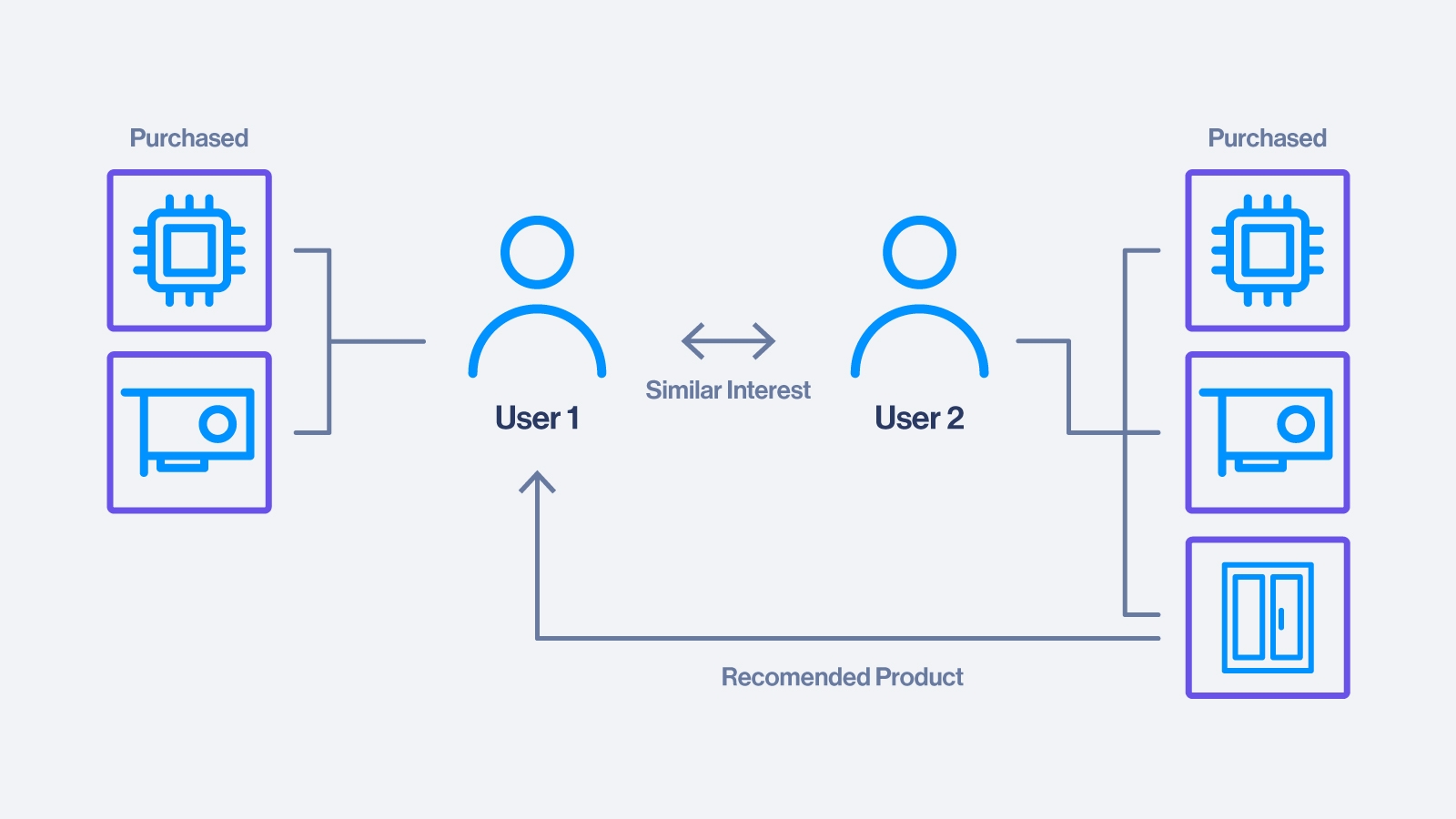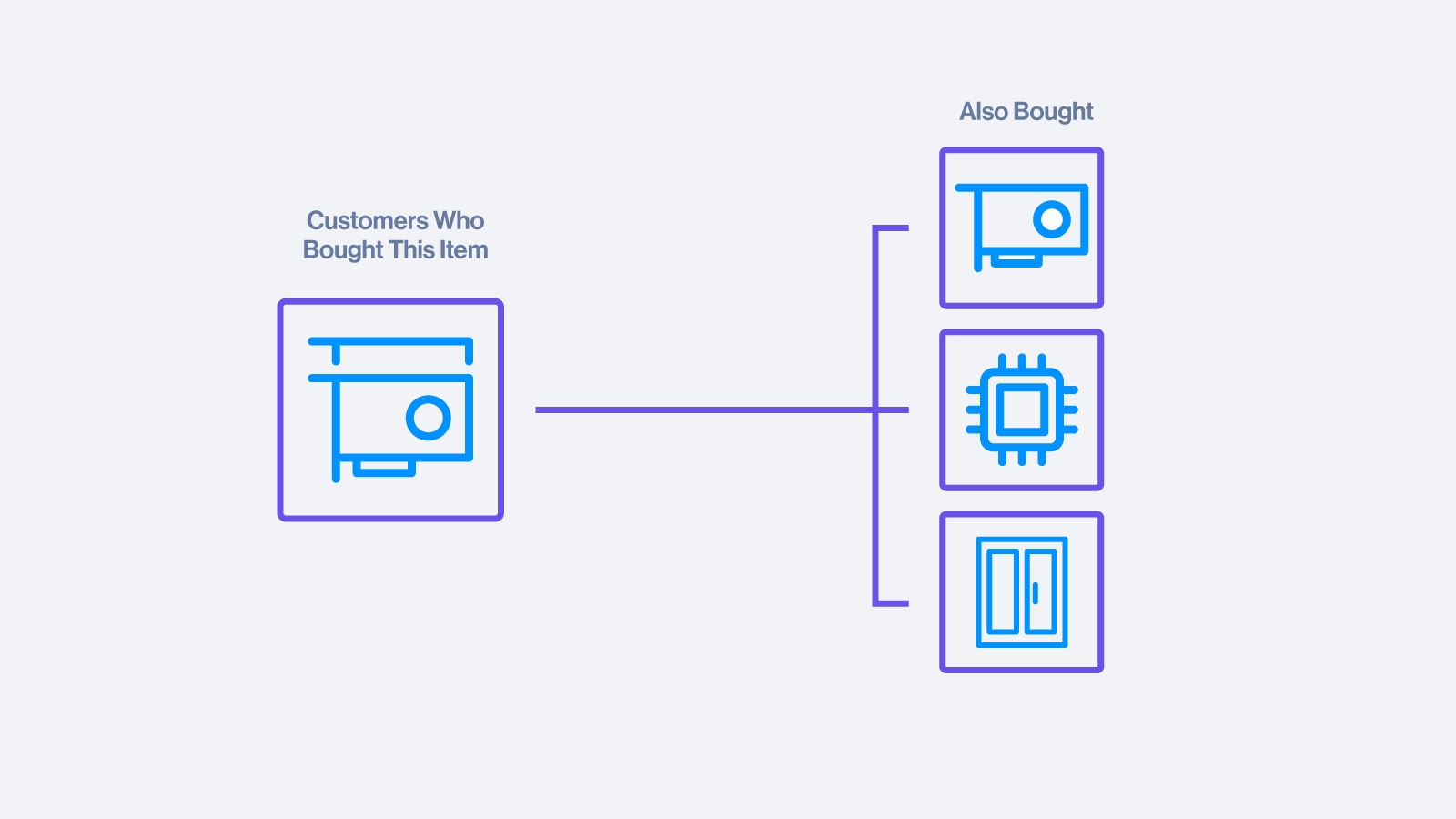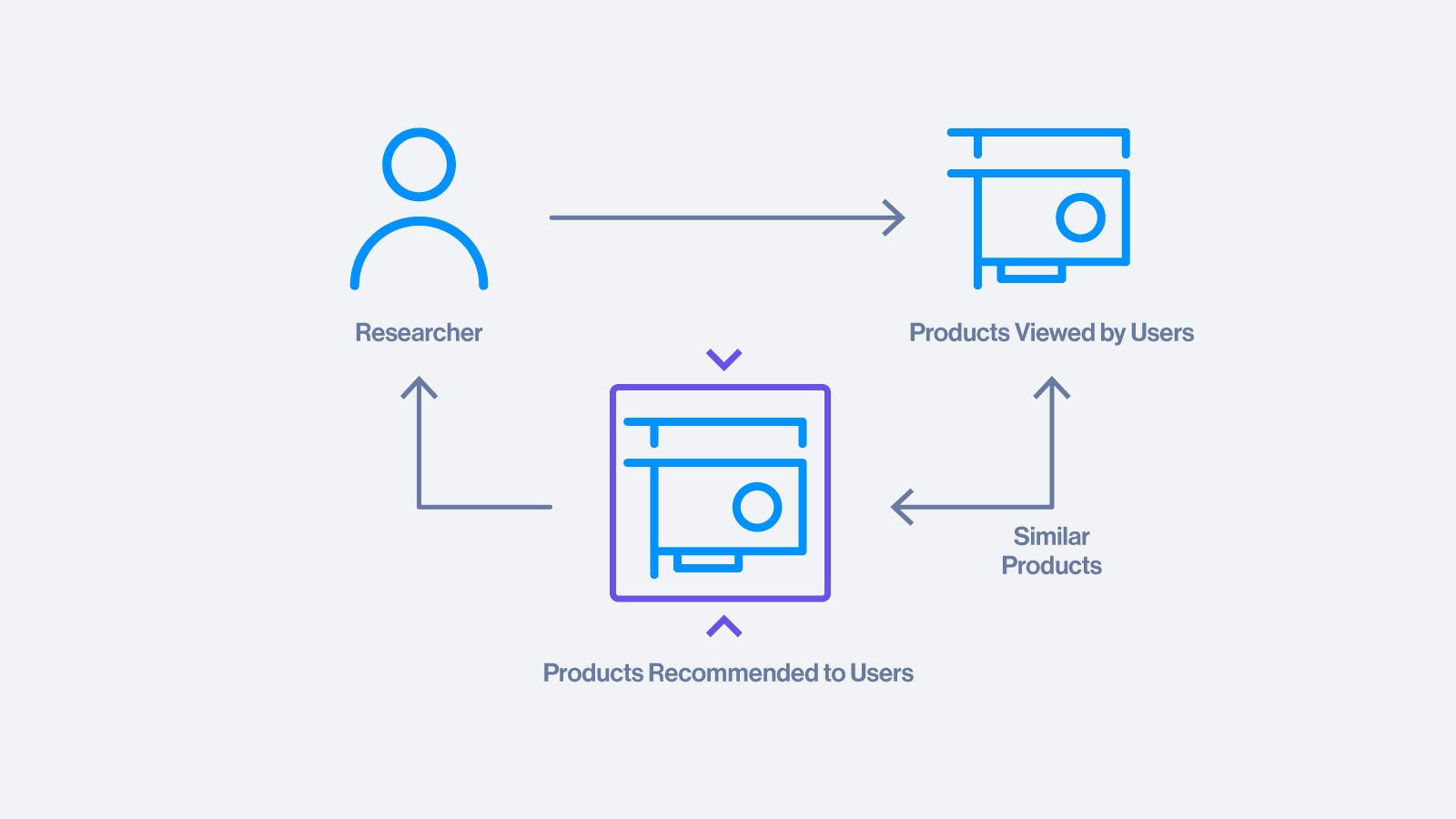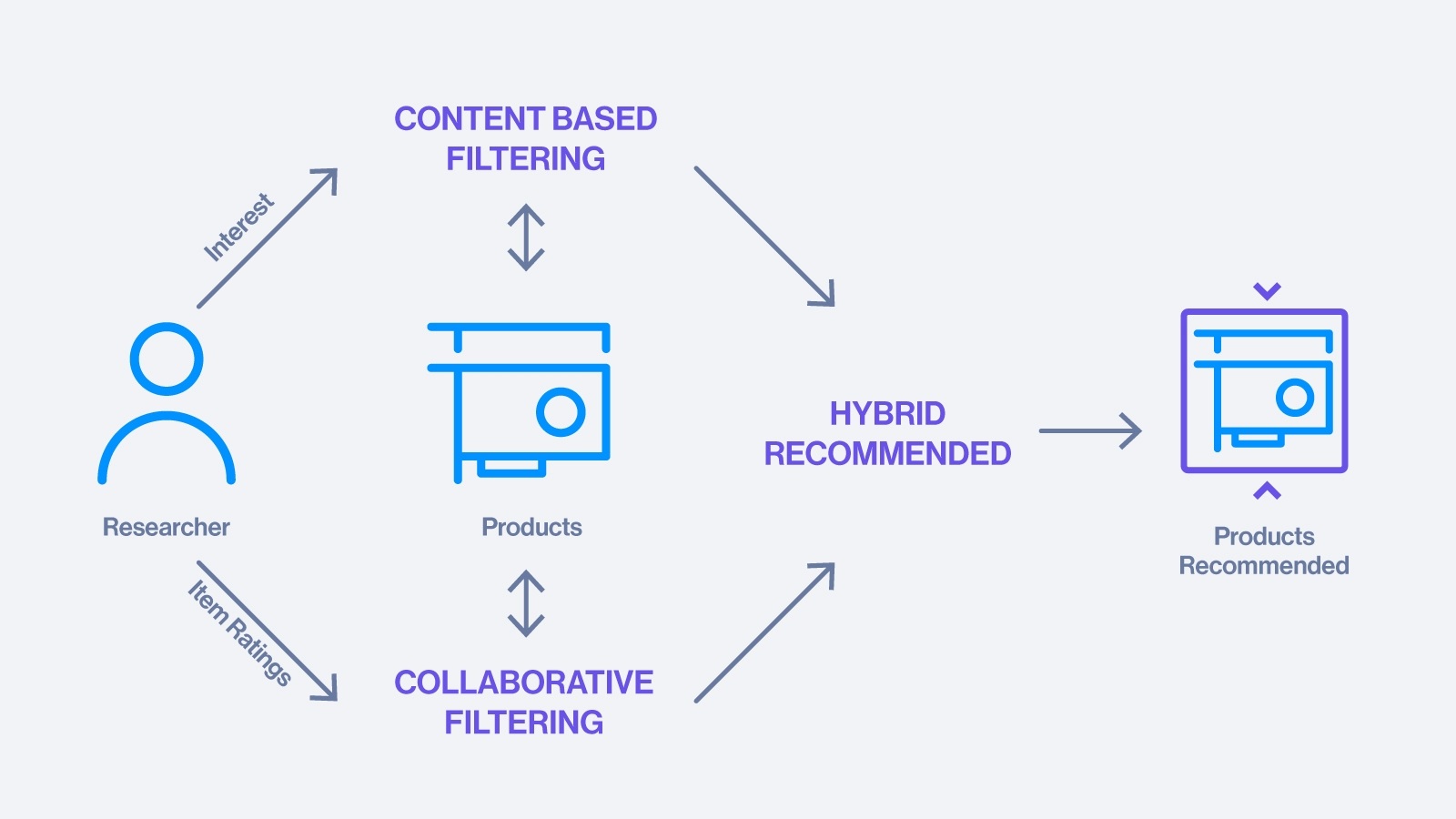Recommendation systems, or recommender systems, are software engines designed to suggest items to users depending on previous likes and dislikes, product engagement and interaction, purchases or watches, etc. Recommender systems are designed to keep users interested and engaged in whatever the site continues to recommend. The success of a recommender system is engagement time and clicks. Take TikTok for example; the more you scroll and watch video, similar content or adjacent content will pop up, in hopes to curate content and keep you on the platform.
Recommendation engines provide a personalized user experience, by helping every single consumer identify and discover their favorite movies, TV shows, digital products, books, articles, services, and more. These systems help businesses increase sales and benefit consumers. Temu lists millions of products on its website; users will likely face issues navigating and finding which products to buy. With Recommendation Systems, consumers are fed similar products, promote ease of use, and compel consumers to continue using the site versus navigating away.
How Do Recommender Systems Work?
A recommendation system is a complex information filtering engine that algorithms and machine learning to suggest potential products depending on previous preferences, secondary filtering, and other factors and variables.
These systems operate by identifying patterns in a user's interactions or finding correlations in the behavior of similar users. The goal is to predict what a user might find valuable or interesting, creating a personalized experience.
- Increasing Engagement and Satisfaction: By continuously providing consumers with an endless array of personalized products, consumers will continue to engage with the application/website. Recommendation Systems optimize the experience to reduce wasted page real estate to boost satisfaction with related content.
- Increased Sales: The number one reason why companies invest in such systems is to generate revenue. Increasing the sales through recommendation systems also increases consumer engagement on their site and captures longer session times.
The method of data collection varies depending on the platform and its offerings. For instance, e-commerce platforms gather data through purchase history, product ratings, and reviews, while platforms like YouTube analyze user interactions such as liked, disliked, and watched videos to refine recommendations. Social media platforms track engagement metrics like shares, comments, reactions, or even just views; pausing on specific content within a feed like on Instagram or Facebook can count towards curating similar content.
These systems are used throughout the industry even beyond entertainment, social media, and e-commerce. We can see these systems deployed in job-boards and disciplinary fields like healthcare and law.
Recommendation System Life Cycle
Some recommendation systems are far more complex than others, but many follow a seven-step path to develop a successful recommendation model:
- Collect the Data: Identify and collect data relevant to the recommendation system. For example, Amazon can collect reviews and product ratings (5-star rating system), while Netflix stores watched, like, and bookmarked shows and movies.
- Store the Collected Data: Store data in proprietary data warehouses or utilize third-party cloud service providers such as Amazon, Google, MongoDB, etc. Data retrieval speeds are essential for fast recommendation systems and more dynamic systems.
- Filter the Data: Filter problematic values (null, infinite, or misleading) in the dataset to improve model accuracy.
- Analyze the Data: In the case of recommendation systems, analyzing data means feeding it into machine-learning or deep learning algorithms that can detect hidden insights and patterns.
- Evaluating and Test Our Model: Check the performance of the recommendation system model. If the model performs poorly, tune the hyperparameters to the desired performance.
- Deploy Our Model: Your model is ready to be deployed into actual practice. Continue to monitor and tune the system.
- Online Machine Learning: Online machine learning after deployment can continuously improve and adjust the model by learning from newly acquired data, maintaining longevity.
Recommendation System Algorithms
Recommendation systems use a variety of algorithms, including matrix-based approaches and deep learning methods. Each serves a distinct purpose in generating personalized recommendations:
- Clustering:
- A type of unsupervised machine learning algorithm that groups users or items based on similarities. For example, it can identify clusters of users with similar preferences or items with similar attributes.
- While clustering can provide good initial insights, it is typically insufficient for building advanced recommendation systems on its own, as it lacks the depth required for personalized predictions.
- Deep Learning:
- A more sophisticated and data-driven approach that analyzes complex behavioral patterns, interactions, and contextual information.
- Deep learning models, such as neural networks, process large amounts of data to identify subtle patterns and relationships, filtering out the most relevant suggestions for each user.
- These methods excel in dynamic environments, such as streaming services, where user preferences evolve rapidly.

Types of Recommendation Systems
Depending on the products or services that a business offers, different recommendation systems may be put into place. Some examples of different systems are:
Collaborative Filtering
The collaborative filtering method focuses on the similarity between different users and items. Consumers who share an overlap of similar interests will more than likely be interested in other similar products. These similarities can improve recommendations to all users within the dataset and continue to learn as new products come into the market.
For example, if Alex likes football and buys a pair of cleats and Meg likes football, then Meg will more than likely also be interested in those cleats.
There are several types of collaborative filtering:
- User to Product Filtering is the simplest of all the filtering methods, in which the algorithm will look for similar items that a consumer previously purchased or liked. Genre, price, item category, etc. are all categories that influence filtering.
- User to User Filtering works by finding consumers who share similar interests and suggests products and services based on what their look-alike user has chosen. Such an algorithm requires high computational power and resources as the algorithm will need to compare all the users in real-time.

Content-Based Filtering
Content-Based Filtering recommendation algorithm evaluates the similarity of products. The recommendation system will suggest products with similar classifications that the user has previously interacted with.
For example, if the last three watched movies included the comedy genre, the system will recommend other similar comedy movies or shows. Such recommendations are also imperative with product images using Image Processing or Natural Language Processing to match items that look, are titled, or described similarly.
Note that similarity-based recommendations will suffer from the cold start problem. The cold start problem occurs when there is not enough preference data. The recommendation system cannot accurately suggest great options when initially implemented on the platform since it takes time to gather and train.

Hybrid Filtering
Hybrid filtering utilizes both collaborative and content-based filtering, leveraging the advantages of each approach.
Several studies comparing the performance of hybrid filtering systems with collaborative and content-based systems alone have shown that hybrid systems have better accuracy.
Combining both algorithms can remove multiple issues like the cold start problem and help gather data quickly. Many of our favorite sites like Google, YouTube, and Netflix utilize hybrid filtering in their recommendation systems.


Examples of Recommendation Systems
Amazon
Amazon stocks millions of products that can cause, customer indecision. When you explore a product page, Amazon's recommendation systems suggest items that other shoppers viewed or purchased to help you find a satisfactory product or do further comparisons.
Spotify
Spotify evaluates songs and podcasts its users engage with, whether that's listening multiple times, adding to playlists, or liking, creating a personalized and unique listening profile. Spotify uses this data and matches similar, likeminded listeners and recommend new music accordingly.
They also curate a Discover Weekly playlist for users to discover new yet familiar music that fall within a similar genre or songs by adjacent artists. Spotify's hybrid filtering algorithm helps listeners discover new music by learning their likes, dislikes, and nuances based on engagement. Skips can count towards a negative counter whereas full play throughs can count towards a positive counter.
Facebook/Meta
Facebook/Meta also utilizes multiple recommendation systems throughout its app. These engines recommend the next post, friend suggestions, and ad placements based on engagement, mutual friends, and more. Facebook's revenue is directly correlated to the effectiveness of its recommendation system hoping to capture more users and more user engagement to keep you on its platform.
Netflix
Netflix is known for its extensive use of recommendation systems. With over 80% of content watched on Netflix coming from algorithmic suggestions, their recommendation system generates an estimated 1 billion dollars of revenue per year.
Each show will be attributed its genre like comedy, horror, drama, and sitcom as well as tags like suspenseful, gritty, even war, farmland and over 3000 more. These tags are visible and invisible to help hone in on recommendations.
You also may notice a match percentage which calculates if a show aligns with your viewing habits according in relation to other users of similar taste. While these percentages are often hidden for most other recommendation algorithms it can further help convince users to watch.
Temu
Temu is a ubiquitous online retailer of cheap goods connecting the world with Chinese sellers built off an endless scrolling marketplace. Temu has traditional e-commerce functions like search and categories. But the biggest function is the home page essentially being an endless scrolling "for you" products that relate to your previous product clicks and orders mixed in with related products with other users' product clicks and orders.
To jumpstart, but also includes goals, free picks, and buy select 3 items for $6 dollars + free shipping, to help generating engagement and scrolling through products and ultimately combat the cold start problem.
Their recommendation system works immediately after your view a couple products. Once you click to look at some type-c chargers, the homepage will tailor itself to charging cables, maybe even charging blocks and charging stations. If you click on streetwear clothing, you'll be fed similar looking clothing. Often times, there will be multiple listings with the same stock photos, and we suspect that Temu uses their internal reverse image search to recommend these products aswell, showing options that have high order rate or lower price.
Final Thoughts on Recommendation Systems
Collaborative Filtering, Content-Based Filtering, and Hybrid Model recommendation engines are high-level foundational methods for anyone to get started with this great tool. With a general overview of the system, there are factors to keep in mind when building a Recommendation System include:
- How will you label the data to have a highly effective recommendation system
- How to track the effectiveness of the recommendations
- When to stop recommending a product to a consumer after they have stopped interacting with it
- How to weigh products that have higher reviews or view counts
- Do recommendations change dynamically? How far back will the system look?
- Recommendation systems can inadvertently pigeonhole a consumer into a small category. How can your algorithm recommend different but effective content to the consumers?
Many businesses utilize and improve upon recommendation systems every day. These algorithms will continue to be developed and used for more and more applications. Such systems offer benefits to both consumers and organizations alike; when used effectively, they can prove to be an imperative sales tool for any company wanting to provide their consumers with satisfying products and recommendations.


